#pearly Everlasting
Text

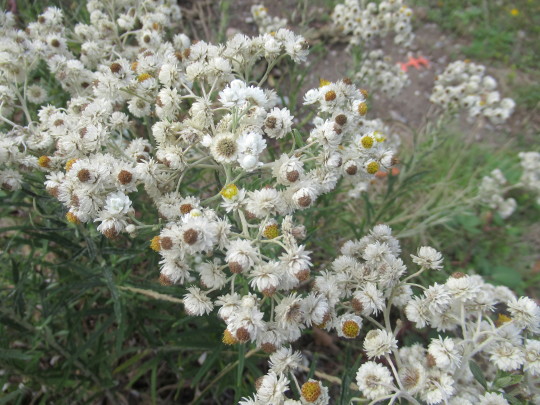
Anaphalis margaritacea (Western pearly everlasting)
There are over 100 species of Anaphalis but only Anaphalis margaritacea is native to North America. It is widespread across most of Canada, the United States and Northwestern Mexico. This species also has native, wild populations throughout Europe and the the Far East. This healthy specimen was found growing on an empty building site. Just what this plant loves: full sun and poor soil.
Western pearly everlasting is dioecious, meaning that the pollen-producing (male) and seed-producing (female) flowers are borne on separate plants. The flowers are either entirely staminate (producing pollen) or functionally pistillate (mostly producing just seed, but with a few staminate flowers present). Thus the female flowers have a brilliant 'back-up plan' which ensures that, even if there are no male plants in the vicinity, there is still a way to produce the next generation of Western pearly everlasting.
#flowers#photographers on tumblr#pearly everlasting#native plants#dried flower arrangements#fleurs#flores#fiori#blumen#bloemen#Vancouver
104 notes
·
View notes
Text
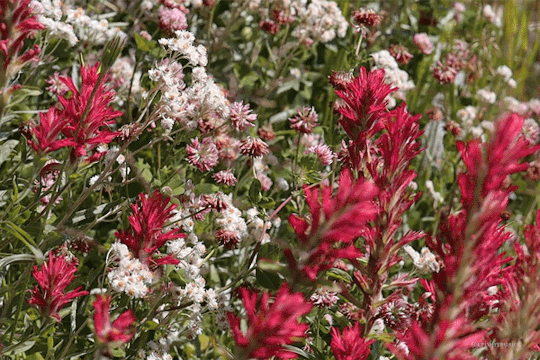
Color Burst
(c) gif by riverwindphotography, August 2023
397 notes
·
View notes
Text
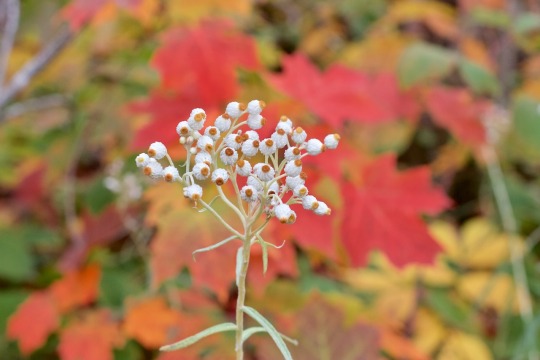
“Unable are the loved to die, for love is immortality.” ~ Emily Dickinson
The pearly everlasting flowers last so long that they have become a symbol of Immortality, and the plant has several other suggestive names including Live-ever, Life-everlasting, and Immortelle. It was traditionally used to decorate the graves of departed loved ones.
39 notes
·
View notes
Text

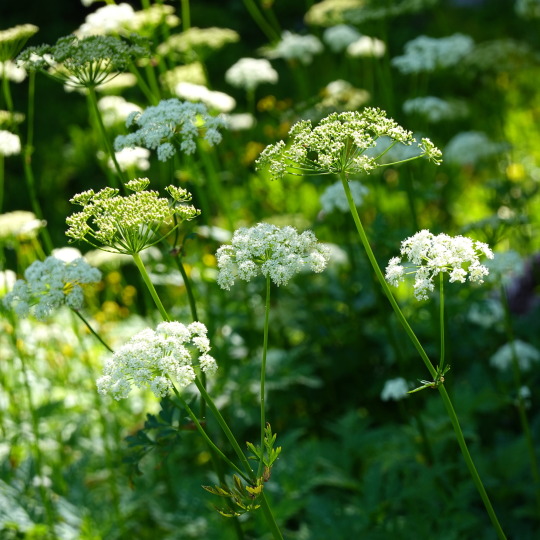
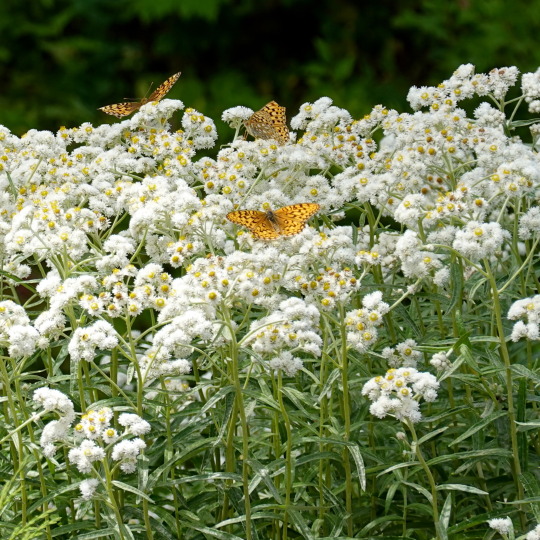
Many wildflower plants are making the shift from blooms to seedheads or berries in the subalpine meadows, but some late-season wildflowers can still be found. Mountain bog gentian (Gentiana calycosa) is having a big year in subalpine meadows around Paradise as well as at Mowich Lake. Other common late-season wildflowers include pearly everlasting and fireweed.
Remember to please stay on trail! It doesn’t take many steps to trample the wildflowers you are coming to see. Many trails offer great opportunities for that perfect mountain + wildflower photo. Where are you finding wildflowers?
For updates on what’s blooming where visit https://go.nps.gov/RainierWildflower
Unfamiliar with Mount Rainier’s wildflower species? Check out the wildflower guide at https://go.nps.gov/RainierWildflowerGuide
NPS Photos of mountain bog gentian at Paradise, 8/16/23, and gray’s lovage and pearly everlasting at Mowich Lake, 8/17/23.
#Rainier Wildflowers#mount rainier national park#wildflowers#mountain bog gentian#pearly everlasting#Paradise#gray's lovage#Mowich Lake
23 notes
·
View notes
Text
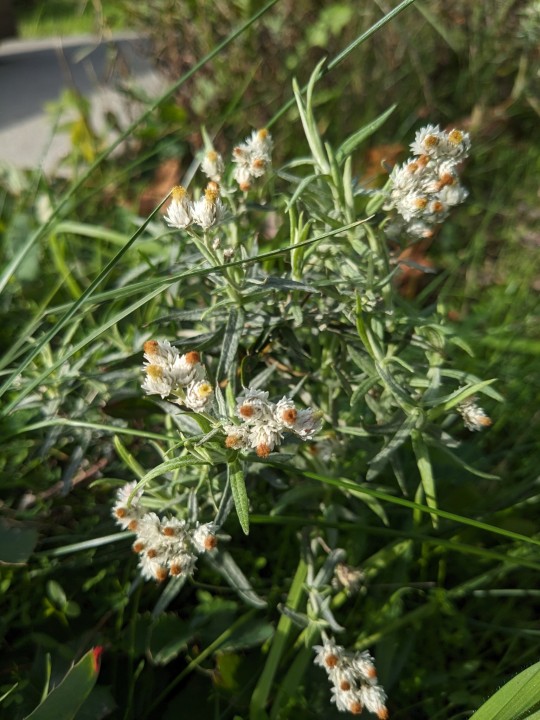
Pearly everlasting living up to its name by still being in bloom mid-october
14 notes
·
View notes
Photo
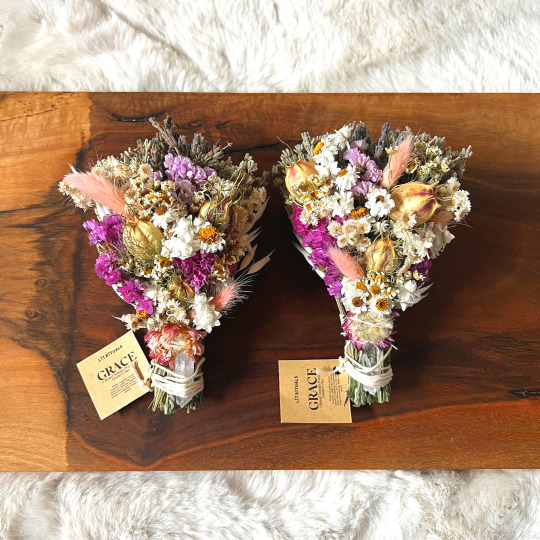
Grace Burn Wand by: Lit Rituals
133 notes
·
View notes
Photo

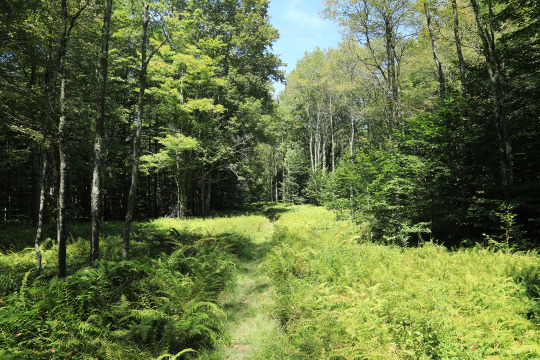
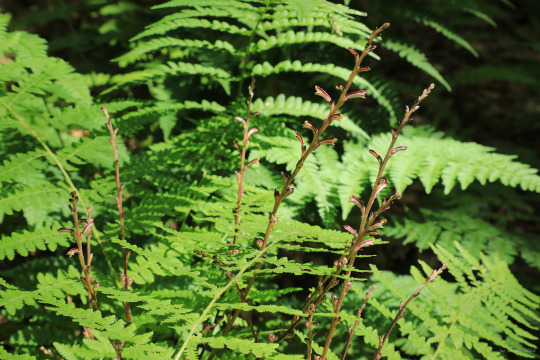

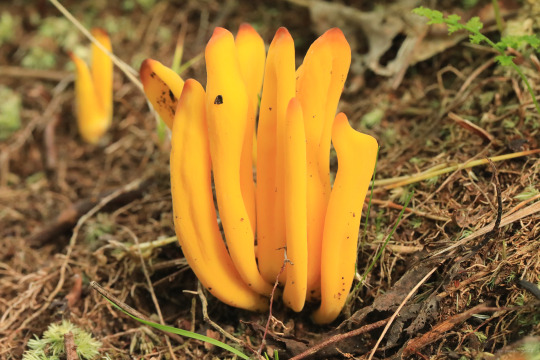

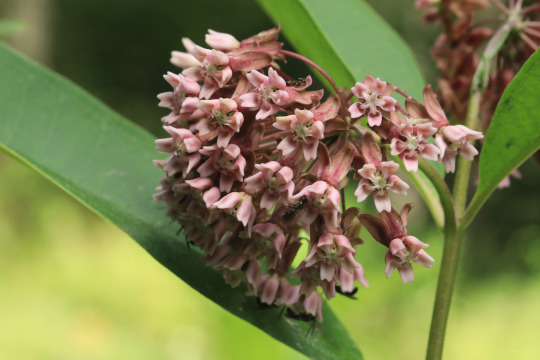

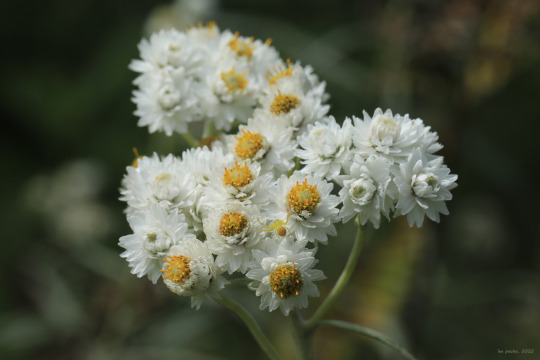

Canaan Valley National Wildlife Refuge, Part 1. Had Allegheny Power gotten its way 40 years ago, the land included as part of this idyllic refuge would today be the muddy bottom of a lake formed by damming the Blackwater River. The power company proposed turning the largest and most botanically-diverse high-elevation wetlands complex east of the Rocky Mountains into a “recreation destination” (e.g., overpriced tourist trap similar to nearby Deep Creek, Maryland) so it could execute a sketchy pump and release hydroelectric scheme. Thankfully, the US Army Corps of Engineers refused to issue a permit, and the nation has been since been rewarded with its 500th national wildlife refuge.
From top: beechdrops (Epifagus virginiana), a really unusual parasitic plant that draws its nutrients from the roots of the American beech tree; golden spindles (Clavulinopsis fusiformis), also known as spindle-shaped fairy club, a glorious late summer coral fungus; great spangled fritillary (Speyeria cybele), a common and lovely member of the Nymphalidae family that practically begs to be photographed; common milkweed (Asclepias syriaca), which blooms late into August at the higher elevation of the valley; Monarch larvae (Danaus plexippus), in their fifth instars; pearly everlasting (Anaphalis margaritacea), a fabulously-beautiful late summer aster much beloved by the dried flower industry; and the stingbean-like seed pods of Indian hemp (Apocynum cannabinum), one of the bittersweet bellwethers of summer’s end.
#appalachia#vandalia#west virginia#allegheny mountains#canaan valley#canaan valley national wildlife refuge#tucker county#epifagus virginiana#beechdrops#clavulinopsis fusiformis#golden spindles#spindle-shaped fairy club#speyeria cybele#great spangled fritillary#asclepias syriaca#common milkweed#danaus plexippus#anaphalis margaritacea#pearly everlasting#apocynum cannabinum#indian hemp#wildflowers#flora#summer
53 notes
·
View notes
Text
Pearly
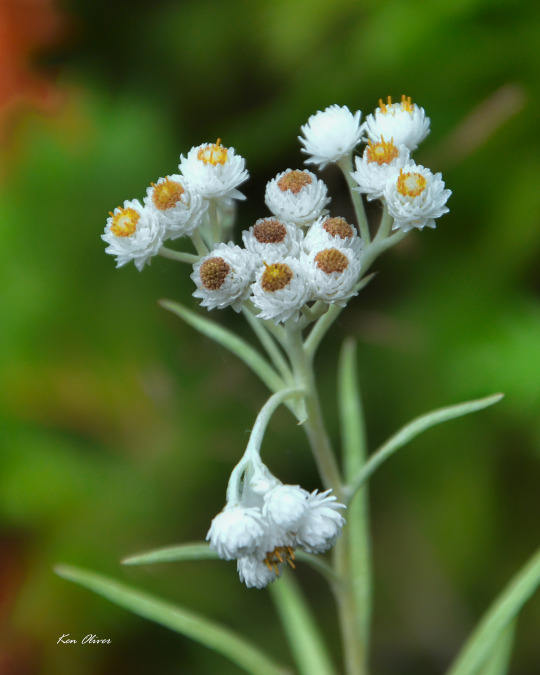
Anaphalis margaritacea (Pearly Everlasting)
©2022 Ken Oliver
#original photographers on tumblr#photography#nature#photographers on tumblr#nature photography#original photographers#original photography on tumblr#wildflowers#macro#pearly everlasting
8 notes
·
View notes
Photo
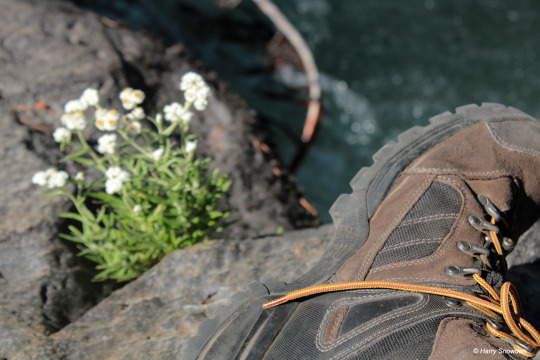
Self Portrait 2022 - with Pearly Everlasting
#pearly everlasting#photographers on tumblr#pnw#oregon#Rogue River#wildflowers#hiking#self portrait#2022#late summer#high cascades
2 notes
·
View notes
Photo

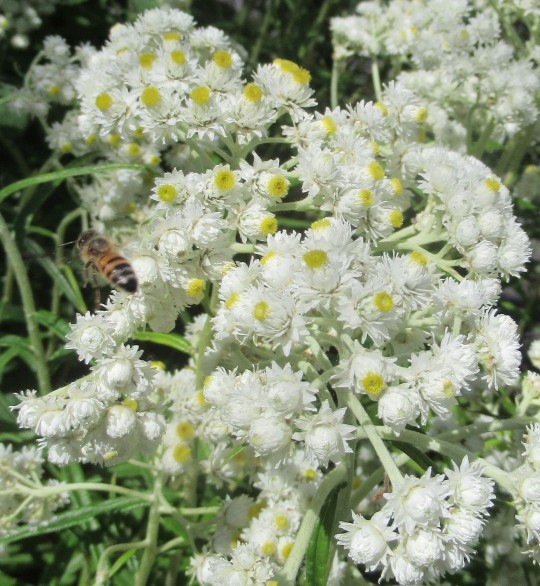
Anaphalis margaritacea (Pearly everlasting) and Apis mellifera (Western honey bee)
The Waggle Dance
In 1927, Karl von Frisch published a book called “The Dancing Bees”. In 1973, he won the Nobel Prize for deciphering the meaning of the Western honey bee’s ‘waggle dance’. When a honey bee finds a rich source of nectar, it returns to the hive and gives a little taste to a group of worker bees. Once it has assembled a crowd it does the ‘waggle dance’. The other bees then fly directly to the food source.
Frisch figured out that the direction of the dance indicates the direction of the food source and the duration of the dance shows the distance. He went on to discover that bees see in color and can understand simple geometric shapes. It is likely that this information is also communicated. Of the 16,000 known species of bees, only the Western honey bee demonstrates this behavior.
#tiny flowers#photographers on tumblr#pearly everlasting#honey bee#Karl von Frisch#fleurs#flores#fiori#blumen#bloemen#vancouver
79 notes
·
View notes
Photo

Portland Landscape Mulch
Inspiration for a mid-sized contemporary shade backyard mulch landscaping in summer.
#native woodland backyard#pearly everlasting#wetland grass#backyard retreat#wetland flowers#native planting#woodland
0 notes
Text
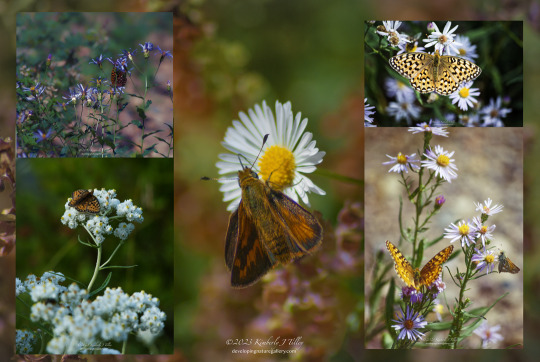
Four fritillary and two skipper butterflies have been added to the BUTTERFLIES folder at developingnaturegallery.com. These five photographs were taken in the western landscape; on trails and in a garden.
#butterflies#insects#bugs#wildflowers#asters#white#purple#orange#yellow#green#garden#nature photography#pearly everlasting#summer#kimberlyjt#developingnature#woman photographer#shoponline#shopsmall#supportsmallbusiness#supportanartist#giftideas#coffee mugs#coasters#posters#wallart#decor#puzzles#buttons#magnets
0 notes
Text

𝟷𝟾𝟽𝟷 𝙵𝚊𝚛𝚖𝚑𝚘𝚞𝚜𝚎
#farmhouse#simple#dried flowers#decor#white#neutral tones#flowers#pearly everlasting#grain sack#cottage
1 note
·
View note
Text
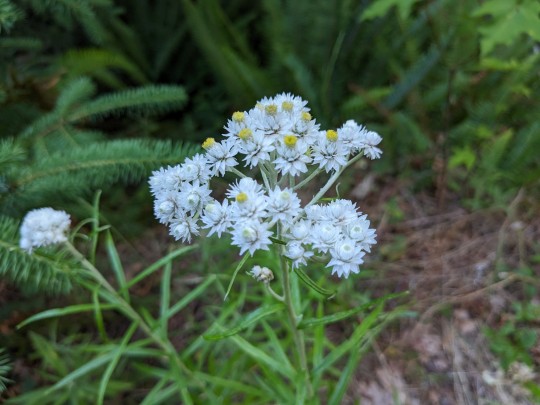
Anaphalis margaritacea was prettier in the wild than the pictures i had seen led me to believe!!!
12 notes
·
View notes
Photo

I am a plagiarized autobiography, a wreckage
A shipwreck in sheep’s clothes
It’s been a year since I joined @cliffsidewarriors-rp with my Whistlefox! Happy birthday, you ridiculous creature.
#cliffside warriors#wcrp#shrike#whistlefox#my art#what a year it's been :}#and cliffside is currently open for new applicants!! WOOO#flowers pictured are#barrat's willow; dotted blazing star; saline shooting star; silky lupine; false solomon's seal; western clematis; pearly everlasting;#and forget-me-nots#for the floriographically inclined among you!
9 notes
·
View notes